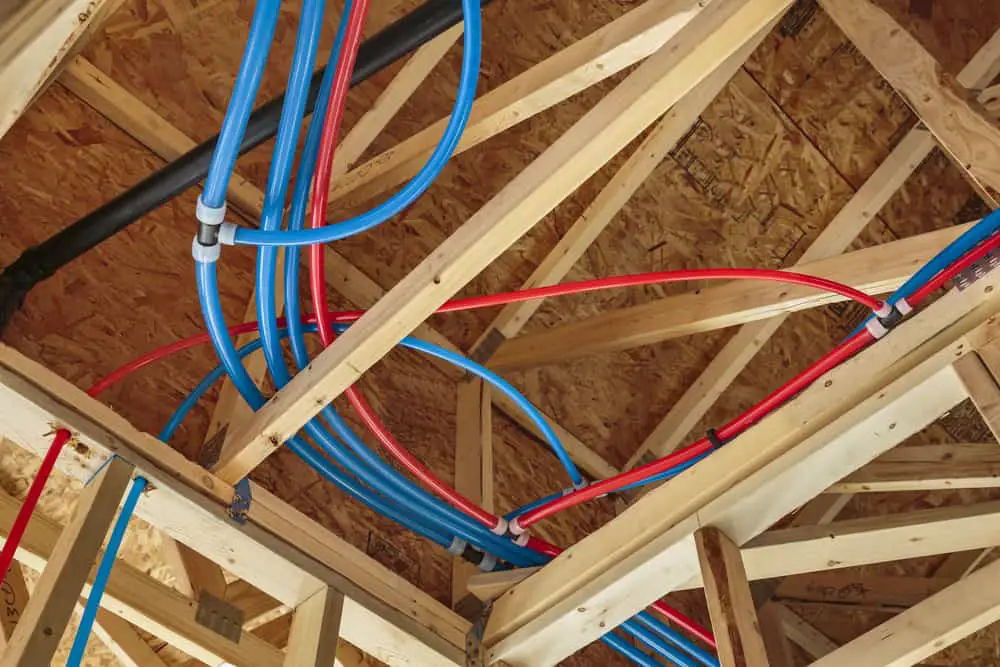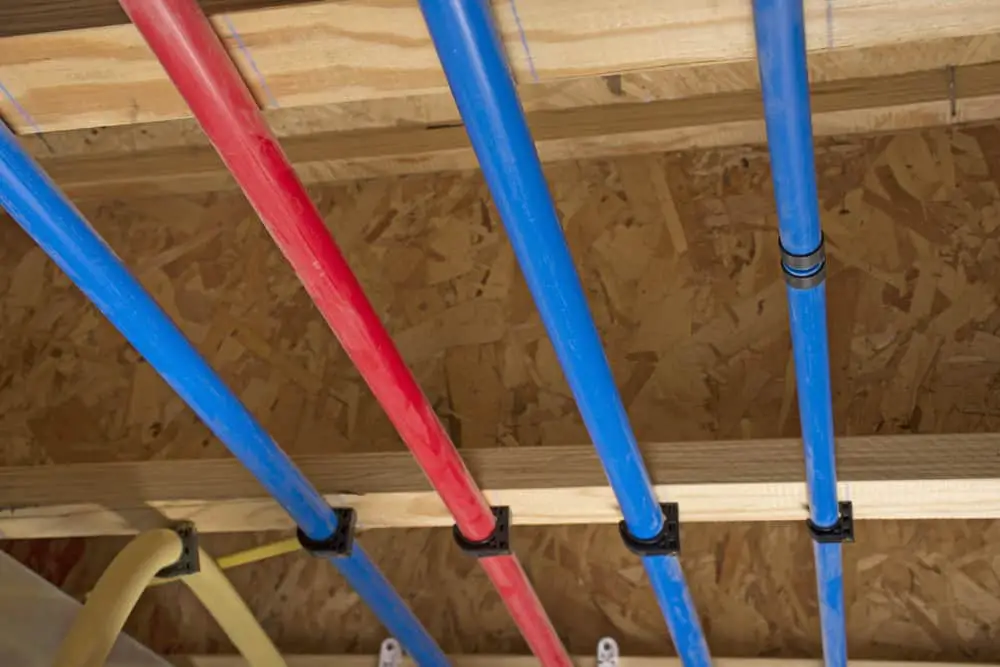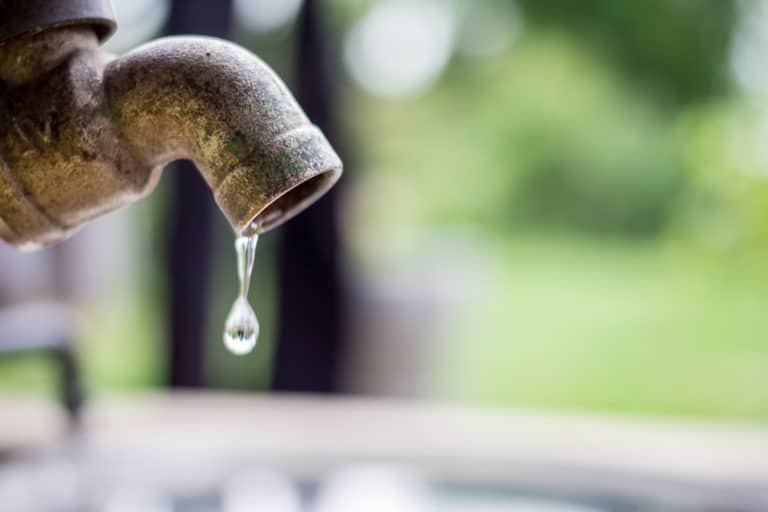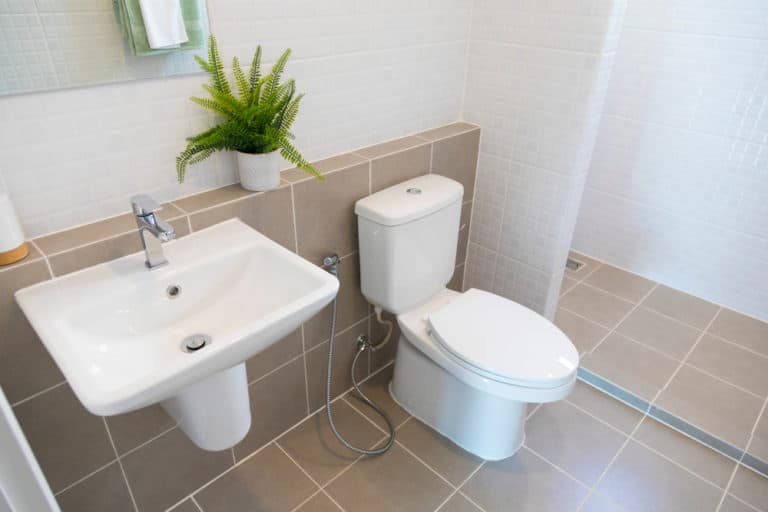Does PEX Need to be Sleeved?
Cross-linked polyethylene (PEX) has become a significant plumbing trend as builders and homes shift from traditional copper and galvanized steel to a more flexible piping solution. A pipe sleeve is a pipe of larger size that protects a smaller pipe inserted in the inside. In addition to protection, the sleeve pipe allows smooth flow in the desired direction.
If you are wondering if PEX needs to be sleeved, the answer is no. The only time it might need to be sleeved is if there is a leak from an expansion joint or penetration. It’s not necessary for regular pipes and has been shown to create uneven temperatures. PEX doesn’t need to be sleeved or covered.
Pipe sleeves are made from various materials, including copper, carbon steel, cast iron, PVC, rubber, and aluminum.
Types of PEX
PEX pipes we developed in 1968 in Europe and introduced in the US in the 1980s. There are three main types of PEX pipes:
- PEX-A- this is the most flexible and mainly home-based plumbing need. It is very resistant to cracking, thanks to its flexibility. It expands and contracts well, making it ideal for use in places with fluctuating heat conditions. It costs higher than the other two primarily due to its flexibility.
- PEX-B- is more rigid and stiffethanto PEX-A and tends to regain its original shape when bent. It is also flexible enough to withstand cracking due to contract and expansion. This type of PEX is made through a moisture-cure process and is suitable in areas with high chlorine content due to its high resistance to chlorine.
- PEX-C – this is the stiffest of all the three. It is also the hardest to work with due to its rigidity. It is easy to crack and kinking during cold seasons. It is used in very few applications involving minor repairs and is the cheapest of the three.
Types of Fitting for Connecting PEX Plumbing Pipe
PEX fittings are not solvent-glued like the case with other plastic plumbing pipes. They instead form mechanical joints at designated sections. As a result, there are different connection methods of PEX pipes, depending on the manufacturer.
PEX Crimp Fittings
These are the standard fittings used in most PEX projects. There is a variety used to make PEX-to-PEX as well as those the join into other pipe materials. The majority are made from brass, but there are also poly-alloy crimp fittings. You need a crimping tool to use PEX fittings. The tool will cut the pipe and ferrule at the same time, which is a significant advantage. Using other plumbing methods, you will need two separate tools to cut and join the material together.
In addition, some of their connection system, PEX fittings, offer a quicker and easier joint than solvent-glued plumbing systems. You can use stainless steel or copper crimp rings and a clamp tool or PEX crimp. Some PEX crimp fittings have O-rings that help create a smooth seal with other pipes. Crimp fittings are used in many applications because they are readily available at affordable prices.
PEX Compression Fittings
PEX compression fittings operate similarly to copper, plastic, or other forms of piping. They have three ma components: compression nut, sleeve, and a ring. They are easy to install and use but require the right tools like compression sleeves and rings to fix them. They are also relatively expensive.
PEX Push-Fit Fittings (Barbed)
This is the most accessible and suitable type of PEX fitting. It is also commonly used in all types of PEX pipes. They are connected by simply pushing the pipe into the fitting. The barbs on the fitting clamp around the pipe hold it in place. This type of PEX fitting is not suitable for high-pressure pipes and needs to be taken apart if the pipe is not in the proper position.
PEX Ball Valve Fittings
If you want to install a ball valve on your line, you need to choose fittings compatible with the valve. The fitting needs to have a ring on one side and an O-ring on the other.
PEX Split Fittings
If you want to install two valves at different points in your system, consider using this type of PEX fitting where the line has been split into two. This type has two sets of rings and O-rings to ensure that the splitting process does not interrupt the water flow by the splitting process.
PEX Manifolds
If you need to distribute your liquid throughout the PEX system, consider using manifolds. They are designed for large applications with multiple lines or one line split into multiple parts. These are also suitable for PEX systems that need to be drained quickly.
PEX Adapters
These are made from brass and can be used in a variety of applications. The adapter has female fittings on one side and male fittings on the other.
PEX Stop Valve Fitting
This is an important fitting, especially if you need to manage your system water flow for testing or repair. Different suitable fittings can be used for this purpose, but a ball valve fitting is a common choice.
PEX Tee Fittings
If you want to install two valves in your system, consider using this type of fitting instead. The fitting has three rings and O-rings, making it suitable for use in high-pressure applications.

Problems Associated with Using Pex Plumbing Pipe Systems
When used correctly, PEX is a good alternative for copper plumbing and is less prone to leakages. However, it can deteriorate over time, and discoloration PVC or CPVC. Additionally, the pipes are flexible enough for them to kink, which makes them hard to use. You can solve this by applying heat to the kinked area, which causes it to straighten out. Therefore, using a PEX plumbing pipe system may be an option if you are not exposed to chlorine in high quantities.
PEX tubing can stretch up to 25% under pressure, so using pus fittings is not recommended. If you need to use them, you will need a clamp or crimp ring at either end of the fitting. However, PEX tubing cannot be pre-crimped after installation, and this may lead to leaks in your system as time goes by if it’s not used correctly. Pex plastic fittings are advised to be used with Pex tubing. If you don’t, the nut may scratch the plastic, causing discoloration over time.
PEX tubing is only suitable for use in cold water systems, not hot water. So if your line needs to carry both types of fluids, consider using PEX manifolds. They are designed for large applications with multiple lines or one line split into multiple parts. PEX tubing requires a good amount of room to expand and contract, making it unsuitable With tight spaces. If you need to use them in a tight space, accessible suitable, consider using PEX manifold valves and manifolds instead.
Pex plumbing pipe systems may not be suitable for high working pressure or hot water usage. If you need to use them in these conditions, consider using CPVC in combination with Copper to make it work in the long run. When choosing a pipe material for your plumbing system, consider what you need it for and where before deciding on PEX. This is because it is not suitable for specific applications that require flexibility or high pressure in particular. Before installing a Pex plumbing, pipe system remember to call in the experts – Plumbers-Dublin
So does it need to be sleeved? It just depends on what you are doing with it. If you use it for high pressure or chlorine, PEX probably isn’t your material of choice. If you need the water to be flexible and not make any significant changes, then PEX might work fine.
Conclusion
There are many opinions on whether PEX needs to be sleeved. We would like to share that it should not as long as the quality of pipe and fittings used in the installation process meets safety standards, such as those set forth by ASTM F1892-99 (Standard Specification for Polyethylene Crosslinked Pipe). Allowing a PEX system without sleeves does provide some benefits, including lower costs and faster installation time. However, if you have concerns about your water supply being contaminated or having lead pipes leak into your home from an ill-fitted plumbing system, then sleeve your piping with a high-quality material explicitly designed for this purpose.







